- Clone
- S20014A (See other available formats)
- Regulatory Status
- RUO
- Other Names
- Transmembrane protease serine 2
- Isotype
- Mouse IgG1, κ
- Ave. Rating
- Submit a Review
- Product Citations
- publications

-

Human colorectal adenocarcinoma cell line, Caco-2, was stained with anti-human TMPRSS2 (clone S20014A) PE (filled histogram) or mouse IgG1, κ PE isotype control (open histogram).
| Cat # | Size | Price | Quantity Check Availability | Save | ||
|---|---|---|---|---|---|---|
| 378403 | 25 tests | £126 | ||||
| 378404 | 100 tests | £265 | ||||
TMPRSS2 is a membrane-anchored protein that belongs to the serine protease family and is involved in many physiological and pathological processes. TMPRSS2 participates in proteolytic cascades and is important in normal physiological function of the prostate. Autocleavage leads to secretion of the protease domain. TMPRSS2 is involved in extracellular matrix disruption and metastasis of prostate cancer cells and activates several substrates, including pro-hepatocyte growth factor/HGF, the protease activated receptor-2/F2RL1 or matriptase/ST14. TMPRSS2 promotes uptake of SARS-CoV-1, MERS-CoV, and SARS-CoV-2 viral particles of by proteolytic cleavage of ACE2 receptor and cleavage of coronavirus spike glycoproteins.
Product DetailsProduct Details
- Verified Reactivity
- Human
- Antibody Type
- Monoclonal
- Host Species
- Mouse
- Immunogen
- huTMPRSS2 transfectant
- Formulation
- Phosphate-buffered solution, pH 7.2, containing 0.09% sodium azide and BSA (origin USA)
- Preparation
- The antibody was purified by affinity chromatography and conjugated with PE under optimal conditions.
- Concentration
- Lot-specific (to obtain lot-specific concentration and expiration, please enter the lot number in our Certificate of Analysis online tool.)
- Storage & Handling
- The antibody solution should be stored undiluted between 2°C and 8°C, and protected from prolonged exposure to light. Do not freeze.
- Application
-
FC - Quality tested
- Recommended Usage
-
Each lot of this antibody is quality control tested by immunofluorescent staining with flow cytometric analysis. For flow cytometric staining, the suggested use of this reagent is 5 µL per million cells in 100 µL staining volume or 5 µL per 100 µL of whole blood. It is recommended that the reagent be titrated for optimal performance for each application.
- Excitation Laser
-
Blue Laser (488 nm)
Green Laser (532 nm)/Yellow-Green Laser (561 nm)
- Application Notes
-
Additional reported applications include: Flow cytometry.
- RRID
-
AB_2910438 (BioLegend Cat. No. 378403)
AB_2910438 (BioLegend Cat. No. 378404)
Antigen Details
- Structure
- Single-pass type II membrane protein
- Distribution
-
Cell membrane, activated by cleavage and secreted
- Function
- Hydrolase, protease, serine protease
- Interaction
- ACE2, HGF, F2RL1, ST14
- Cell Type
- Epithelial cells, Platelets
- Biology Area
- Cancer Biomarkers, Cell Biology, COVID-19
- Molecular Family
- Proteases
- Antigen References
-
- Hoffman M, et al. 2020. Cell. 181:271-280.
- Yu J, et al. 2010. Cancer Cell. 17:443-54.
- Shen LW, et al. 2017. Biochimie. 142:1-10.
- Gene ID
- 7113 View all products for this Gene ID
- UniProt
- View information about TMPRSS2 on UniProt.org
Related Pages & Pathways
Pages
Related FAQs
- What type of PE do you use in your conjugates?
- We use R-PE in our conjugates.
Other Formats
View All TMPRSS2 Reagents Request Custom Conjugation| Description | Clone | Applications |
|---|---|---|
| Purified anti-human TMPRSS2 | S20014A | IHC-P,FC |
| PE anti-human TMPRSS2 | S20014A | FC |
Customers Also Purchased
Compare Data Across All Formats
This data display is provided for general comparisons between formats.
Your actual data may vary due to variations in samples, target cells, instruments and their settings, staining conditions, and other factors.
If you need assistance with selecting the best format contact our expert technical support team.
-
Purified anti-human TMPRSS2
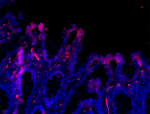
Human paraffin embedded colon tissue was subjected to heat-m... 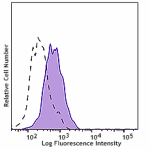
Human colorectal adenocarcinoma cell line, Caco-2, was stain... 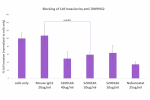
The effect of anti-human TMPRSS2 (clone S20014A) on the abil... 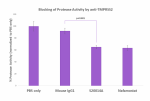
The effect of anti-human TMPRSS2 (clone S20014A) on TMPRSS2 ... -
PE anti-human TMPRSS2
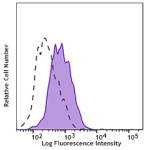
Human colorectal adenocarcinoma cell line, Caco-2, was stain...

 Login / Register
Login / Register 










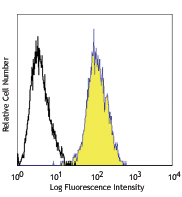
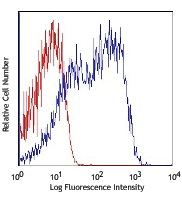




Follow Us